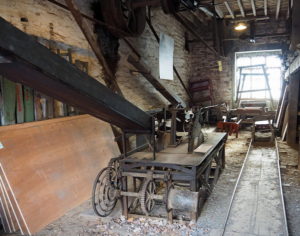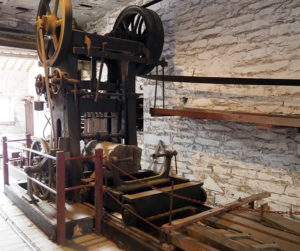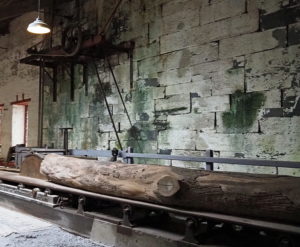This is one of a series of more detailed reviews for the “National Slate Museum.”:https://museum.wales/slate/
The foundry was the heart of the workshop where all the metal parts were cast, from fly wheels to parts for machinery and even metal window frames. The furnace had a very tall chimney to increase the draft ensuring sufficiently high temperatures for melting the iron. The crane and jib swung the cupola round to fill the moulds.
Wooden patterns were carved in the pattern loft to make the moulds for the different parts. The wood patterns are placed in mould boxes on the foundry floor and are then tightly packed with special moulding sand to make the shape for casting. The pattern is carefully removed and molten metal is poured into the space left. It is left overnight to cool and the mould is split open and the sand removed. The metal casting is then sent to the workshops for finishing.
Next to the foundry are the saw mills, with saws powered by the massive waterwheel. Large tree trunks could be turned into planks for railway sleepers, blast shelters, carts and wagons.
I found this fascinating and particularly all the different pattern designs. It must have been an incredible sight when it was working.










